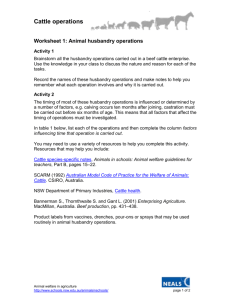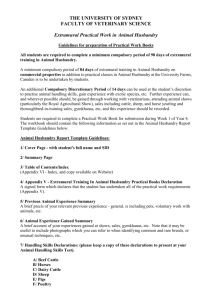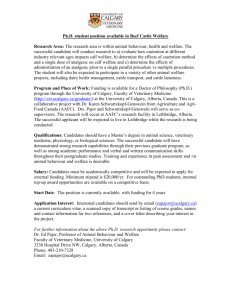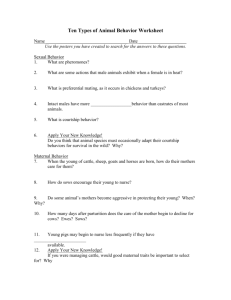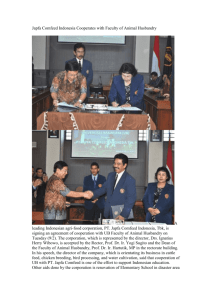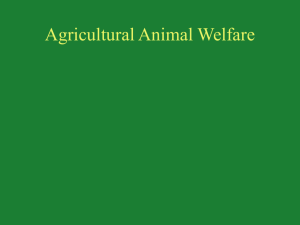Animal husbandry operations
advertisement
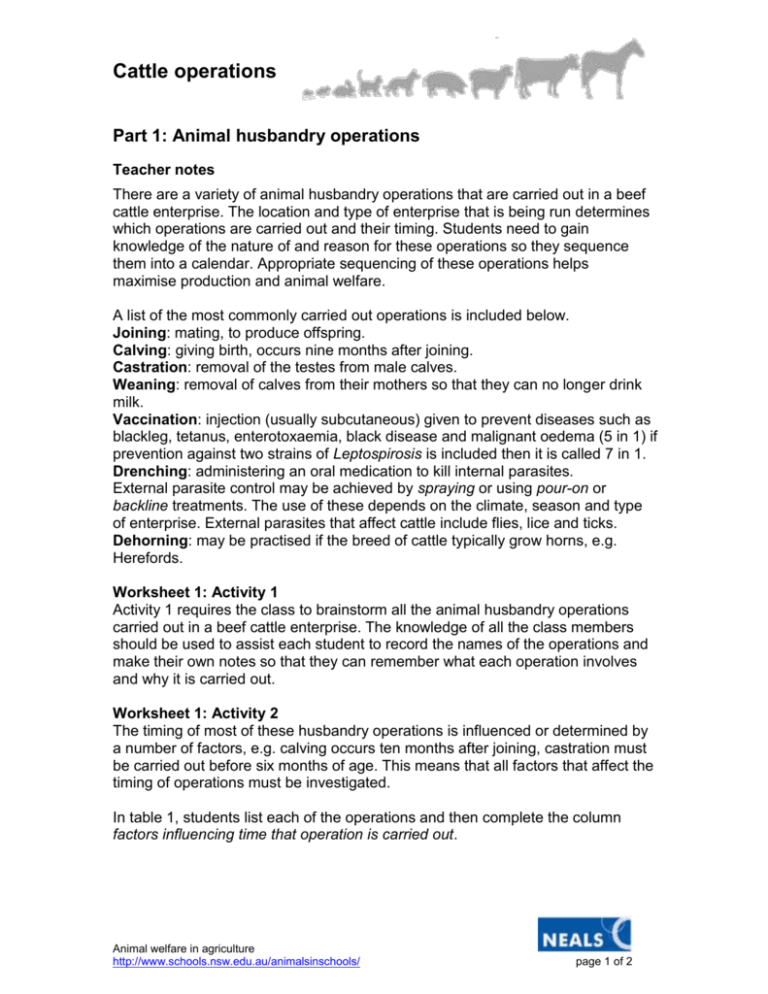
Cattle operations Part 1: Animal husbandry operations Teacher notes There are a variety of animal husbandry operations that are carried out in a beef cattle enterprise. The location and type of enterprise that is being run determines which operations are carried out and their timing. Students need to gain knowledge of the nature of and reason for these operations so they sequence them into a calendar. Appropriate sequencing of these operations helps maximise production and animal welfare. A list of the most commonly carried out operations is included below. Joining: mating, to produce offspring. Calving: giving birth, occurs nine months after joining. Castration: removal of the testes from male calves. Weaning: removal of calves from their mothers so that they can no longer drink milk. Vaccination: injection (usually subcutaneous) given to prevent diseases such as blackleg, tetanus, enterotoxaemia, black disease and malignant oedema (5 in 1) if prevention against two strains of Leptospirosis is included then it is called 7 in 1. Drenching: administering an oral medication to kill internal parasites. External parasite control may be achieved by spraying or using pour-on or backline treatments. The use of these depends on the climate, season and type of enterprise. External parasites that affect cattle include flies, lice and ticks. Dehorning: may be practised if the breed of cattle typically grow horns, e.g. Herefords. Worksheet 1: Activity 1 Activity 1 requires the class to brainstorm all the animal husbandry operations carried out in a beef cattle enterprise. The knowledge of all the class members should be used to assist each student to record the names of the operations and make their own notes so that they can remember what each operation involves and why it is carried out. Worksheet 1: Activity 2 The timing of most of these husbandry operations is influenced or determined by a number of factors, e.g. calving occurs ten months after joining, castration must be carried out before six months of age. This means that all factors that affect the timing of operations must be investigated. In table 1, students list each of the operations and then complete the column factors influencing time that operation is carried out. Animal welfare in agriculture http://www.schools.nsw.edu.au/animalsinschools/ page 1 of 2 Cattle operations Additional resources that students may use to help them complete worksheet 1 include: Cattle species-specific notes, Animals in schools: Animal welfare guidelines for teachers, Part B, pages 15–22. SCARM (1992) Australian Model Code of Practice for the Welfare of Animals: Cattle. CSIRO, Australia. NSW Department of Primary Industries, Cattle health. Bannerman, S., Thornthwaite, S. and Gant, L. (2001) ‘Beef production’ in Enterprising Agriculture. MacMillan, Australia, pp. 431–438. Product labels from vaccines, drenches, pour-ons or sprays that may be used routinely in animal husbandry operations. Worksheet 1: Activity 3 Activity 3 is a series of discussion questions that should help students to correctly sequence the husbandry operations to ensure that appropriate standards of animal welfare are maintained. Animal welfare in agriculture http://www.schools.nsw.edu.au/animalsinschools/ page 2 of 2
